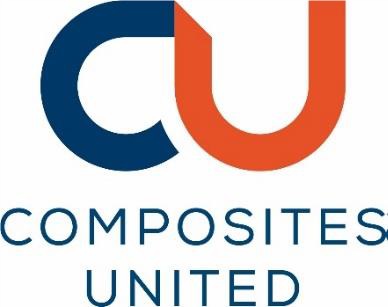
CU - Fachinformationen-öffentlich
CU - Fachinformationen-öffentlichApp-Einstellungen:
Abstract
Novel simulation-driven product development shifts the role of physical testing to virtual testing, to simulation respectively. This requires High Fidelity concerning the material models used. First and usual assumption for the material models is an ideally homogeneous material. Deviations are specifically taken into account.
Material resistance must be generally demonstrated by a positive Margin of Safety MoS or a Reserve Factor RF = MoS - 1 > 1 in order to achieve Structural Integrity for the envisaged Limit State! For the 3D-Demonstration of Strength - nowadays a must regarding the usual 3D FEA stress output - principally so-called 3D strength criteria or 3D failure bodies are required to firstly perform Design Dimensioning and to finally achieve Design Verification. In the case of brittle materials it is a fracture (failure) body. The surface of such a failure body is determined by the points of all those stress states that lead to failure. It is mathematically defined by a Failure function F which becomes 1 at Onset-of- Failure. Usually these Fs are written as Strength Failure Conditions (SFC) F = 1. SFCs used in this paper are those which have been generated of the author’s Failure-Mode-Concept (FMC). The FMC incorporates a rigorous thinking in failure modes and can be briefly described by the features: Failure mode-wise mapping, stress invariant-based formulation, equivalent stress generation, each failure mode is governed by just one strength Rmode and all SFC model parameters are measurable entities. This involves a direct use of the friction value μ in the case of compressed brittle materials where the model parameter for friction in the SFC is replaced by the measured μ. Therefore, the very challenging task to transform an SFC in structural stresses into a SFC in Mohr stresses had to be performed.
The difference between a so-called ‘global fitting’ and a ‘(failure mode-linked) modal fitting’, such as with ‘Mises Yielding’, of failure test data is pointed out. Further, terms such as mixed failure mode (mode interaction), multiple failure mode action and multi-axial strength are presented and discussed.
During the derivation of the FMC a closer look at material symmetry facts was taken whereby the question arose: “Does a material symmetry–linked Generic Number exist with a number 2 for isotropic and 5 for UD materials? This looks to be proven by the investigation of Normal Yielding NY of plexiglass and a compressive fracture toughness Kcr for an ideally brittle material.
The SFC approaches consider - following Beltrami and Mohr-Coulomb – that the solid material element may experience, generated from different energy portions, a shape change (HMH), a volume change and friction. The derivation of the SFCs is based on specific FMC ideas and partly builds up on the hypotheses of Beltrami, Hencky- Mises-Huber (HMH) and Mohr-Coulomb.
FMC-based SFCs, nowadays most often termed Strength Criteria are enlisted for a large variety of isotropic brittle structural materials such as porous Concrete Stone, Normal Concrete, UHPC sandstone, monolithic ceramics and for the transversely-isotropic fiber-reinforced polymers Lamina (ply, lamella) and Fabrics. Orthotropic fabrics inclusively fabric ceramics are further included. Available multi-axial fracture test data were mapped to validate the SFCs chosen for the description of the envisaged fracture failure model. For a large variety of materials the course of test data was mapped and the associated fracture bodies displayed with distinct cross–sections of them: Principal stress plane, octahedral stress plane and tensile and meridian planes. Various links or interrelationships between the materials are outlined. Different but similar behaving materials can be basically treated with the same SFC.
If several failure modes are activated by the stress state then the application of the material stressing effort Eff (Werkstoffanstrengung) is very helpful because the full Eff consists of the mode portions Eff mode. The contribution of each single Eff mode informs the designing engineer about the importance of the single portions in the SFC and therby about the critical failure driving mode. Whereas the structural engineer is more familiar with the equivalent stress the material engineer prefers above ‘material stressing effort’ Eff (Werkstoffanstrengung). These terms are linked by .
Special attention is paid not only to the porous materials grey cast iron, concrete, foam which possess a convex fracture failure surface, but also to the normal yielding experiencing plexiglass PMMA which possesses a concave fracture failure surface part in the principal tension stress domain.
Of further intensive concern was to automatically generate Constant Fatigue Life curves on basis of just a few tested Master S-N curves together with a physically based model, namely Kawai’s ‘Modified fatigue strength ratio’ . This procedure is a novelty and applicable for materials like UD plies and isotropic concrete as well.
An automatic insertion of the 3D stress state FE output was numerically foreseen in order to obtain a problem-free strength assessment by a Reserve Factor RF.
Dateien
-
FMC and Strength Mechanics Building_RC_October 2021_distributed.pdf
FMC and Strength Mechanics Building_RC_October 2021_distributed.pdf
Bild 1 von
09.11.2021 10:3009.11.2021 10:30 von annettthieme erstellt.
09.11.2021 10:5309.11.2021 10:53 von annettthieme bearbeitet.
 Englisch
Englisch
